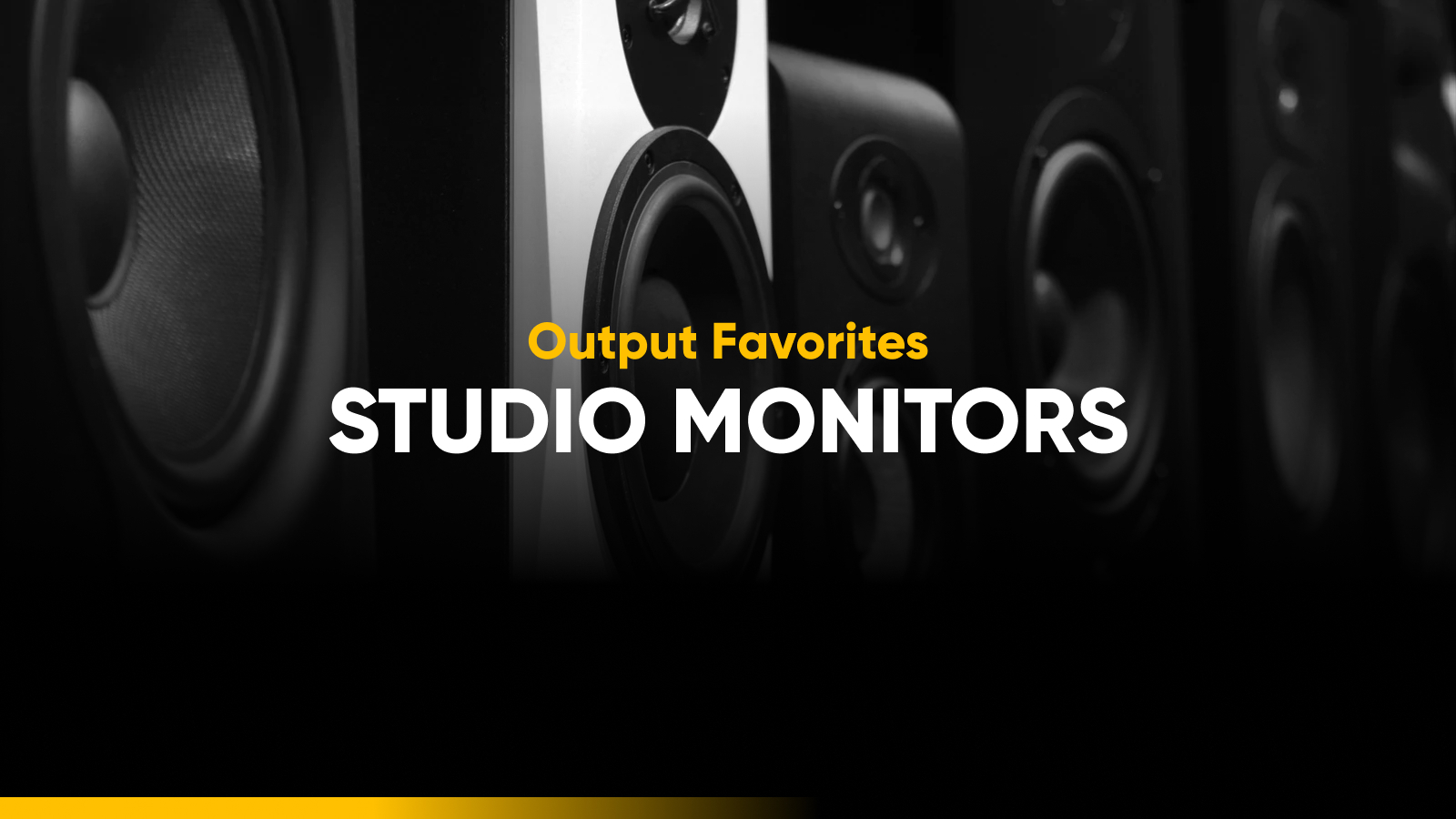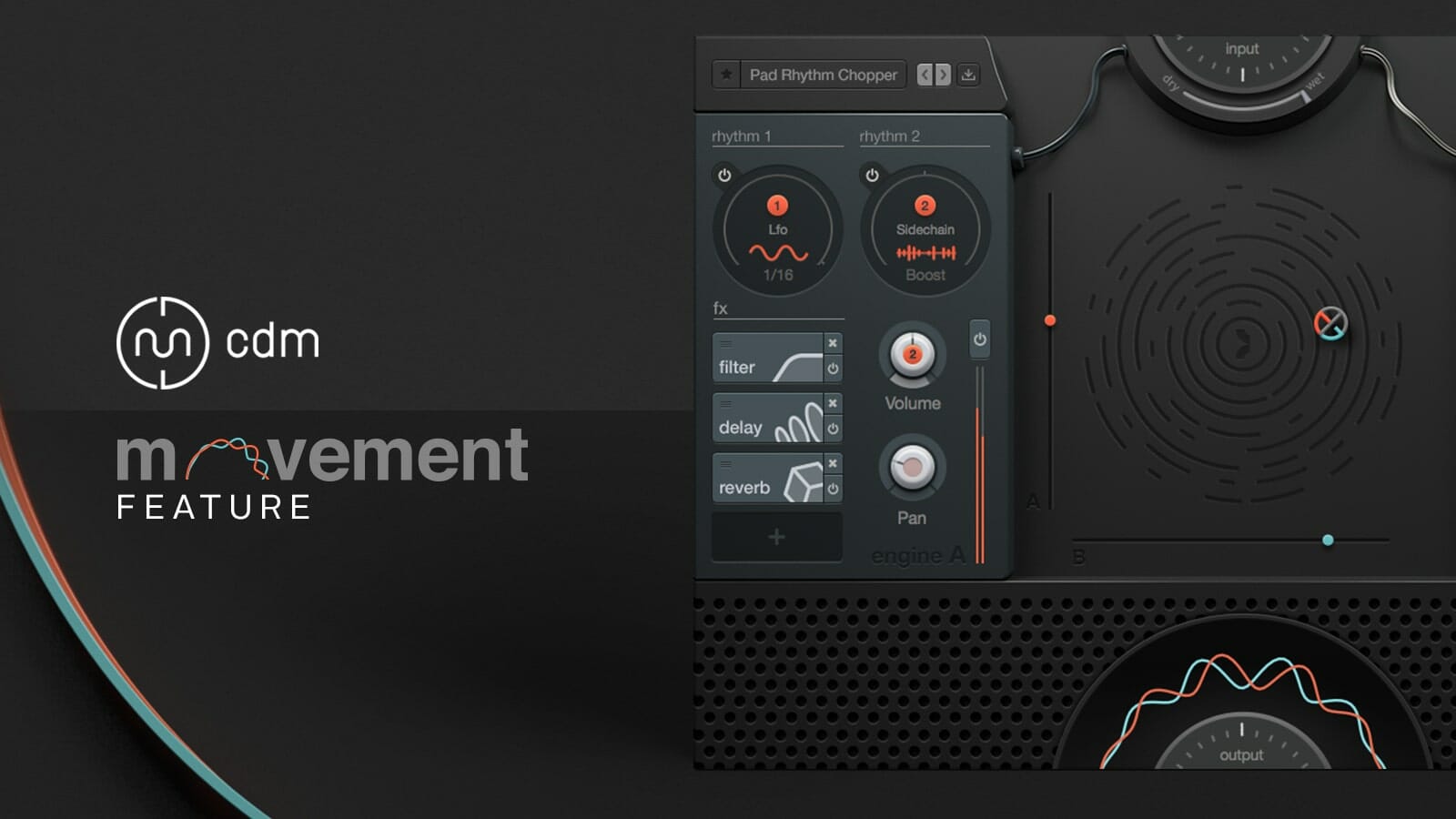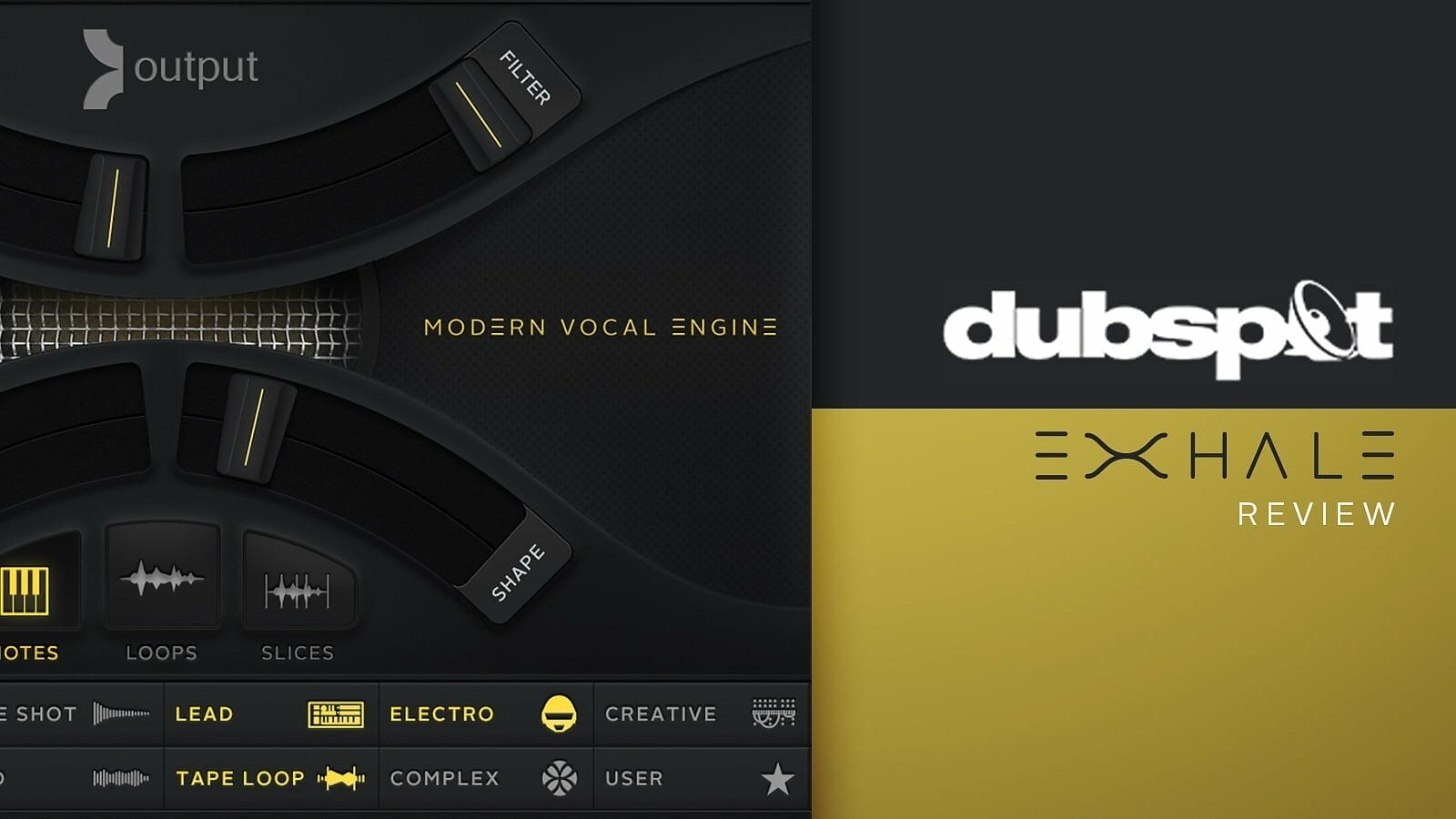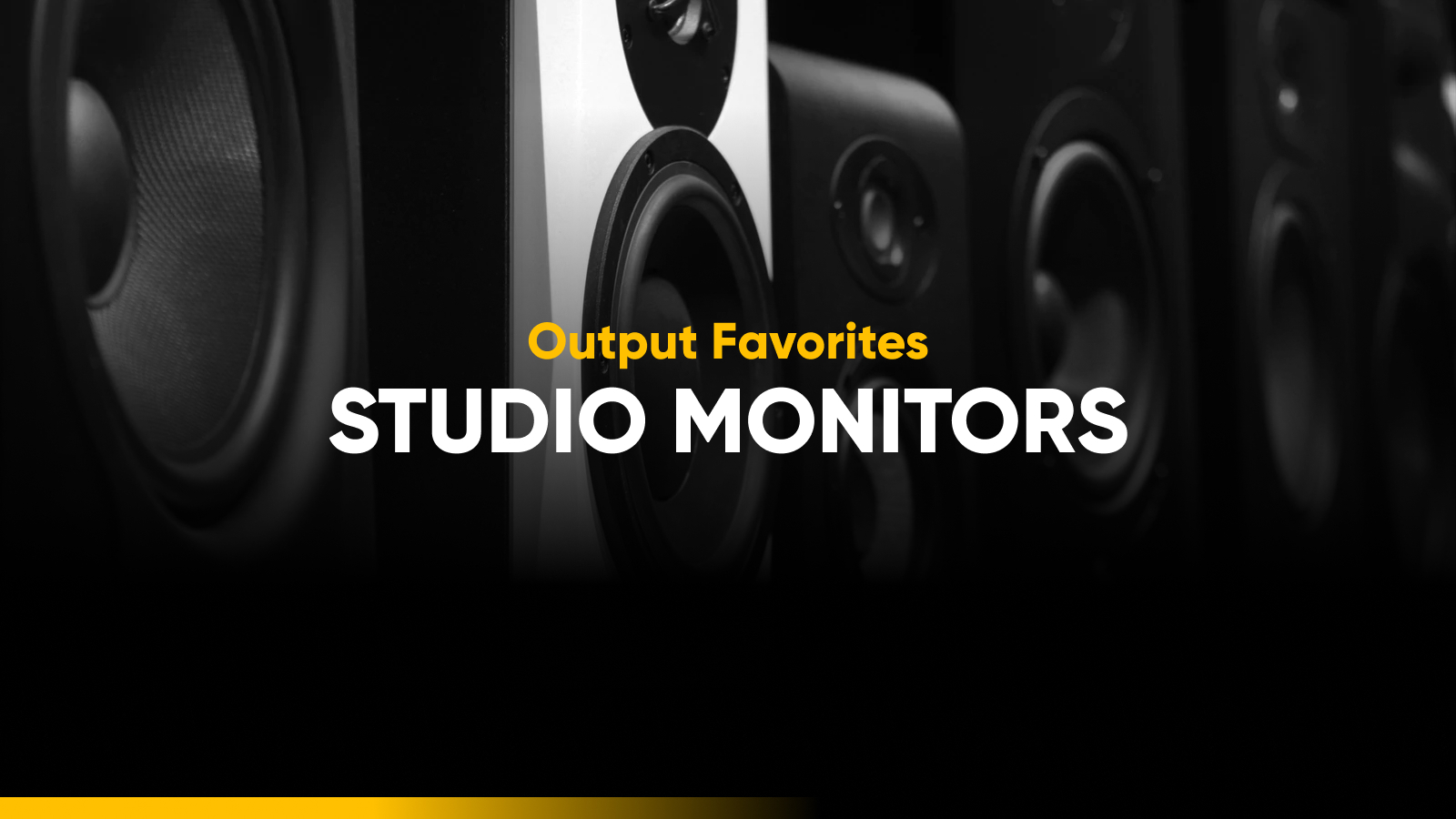
Studio monitor speakers are a crucial investment for any studio — bedroom or otherwise — but it can be hard to determine what brand and model are the perfect pair for you. There are lots of factors to take into consideration. Your mixing habits, the size and shape of your room, the size of your desk, the genres you like to make, inputs and outputs, existing acoustic treatments, and more all play a role. It can be daunting. Specs aside, a big consideration for many is the cost.
If you’re in the market for studio monitors, we gathered a list of our eight favorites. Some are great for smaller spaces, some can self-tune to wonky rooms, and some are perfect for those on a budget.
Studio monitors vs. home speakers
If you’re new to music recording and production it might not be clear why studio monitors are an important equipment addition for your studio. Or, how monitors are different from a regular pair of speakers.
Your home speakers are probably powered by a single external amplifier and are built to enhance elements like bass and high frequencies. Some people like hearing music with a thicker low-end, and there are lots of speakers built to do just that. Consumer speakers are meant for listening to music, not working on music. This means that no matter what you do, what’s played back on home speakers will have some color and sound a bit different from what you’ve made in your digital audio workstation (DAW).
Professional studio monitors have built-in amplifiers, extended range, and — compared to consumer speakers — a more accurate (flat) sound. Since powerful sounds like deep bass notes and drum crashes have their own amps in studio monitors, they don’t reroute energy as they would in a regular home speaker. This results in a more precise, non-enhanced sound.
What you should understand is that none of these studio monitors will deliver some platonic ideal of “good sound” or “accuracy.” (After all, everyone’s ears have different EQ curves!) But if you want to improve your mixes, having the right pair of monitors for you is key. Let’s dive in.
1. Output Frontier Studio Monitors
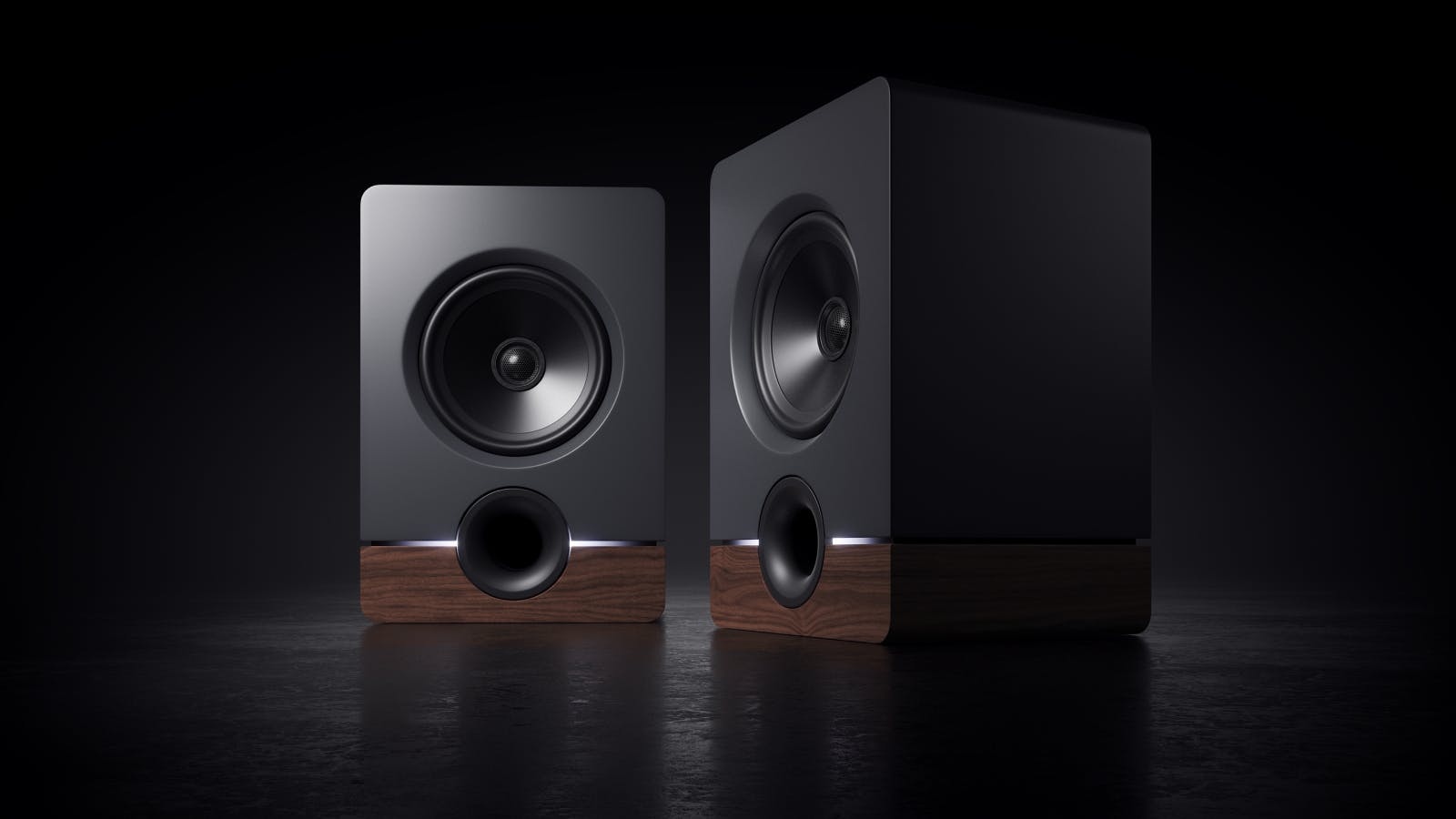
Pros: Developed with Barefoot Sound, front-facing bass port makes it good for tighter spaces, optional eco mode
Cons: Solid walnut base might not fit everyone’s studio vibe
OK, fine, yes, these are our reference monitors, but we put the Output Frontier series up in front because they can compete with the best. Developed with Barefoot Sound and founder/designer Thomas Barefoot — whose monitors can be found in beloved recording studios worldwide — the Frontier monitors deliver a full, rich sound in an elegant enclosure with a solid walnut base.
Frontier monitors have time-aligned 6.5” coaxial speakers, which cuts down on smearing and improves both clarity and stereo imaging. They also have a front-facing bass port, delivering focused low-end without a subwoofer. So they’ll work well even in small home studios. With most other monitor speakers, you have to be more mindful about how close they are to the walls to avoid undue bass build-up.
As a bonus, the Frontier monitors come with a toggle switch for Eco Mode, which reduces power consumption when the speakers aren’t being used without turning them off. And, the packaging the monitors are shipped in is made from recycled materials.
If you’re wondering how these will hit the sweet spot in your home production studio, buy them knowing that you can return them within 30 days at no cost. (Did we mention they also look damn good?)
2. ADAM Audio A7X
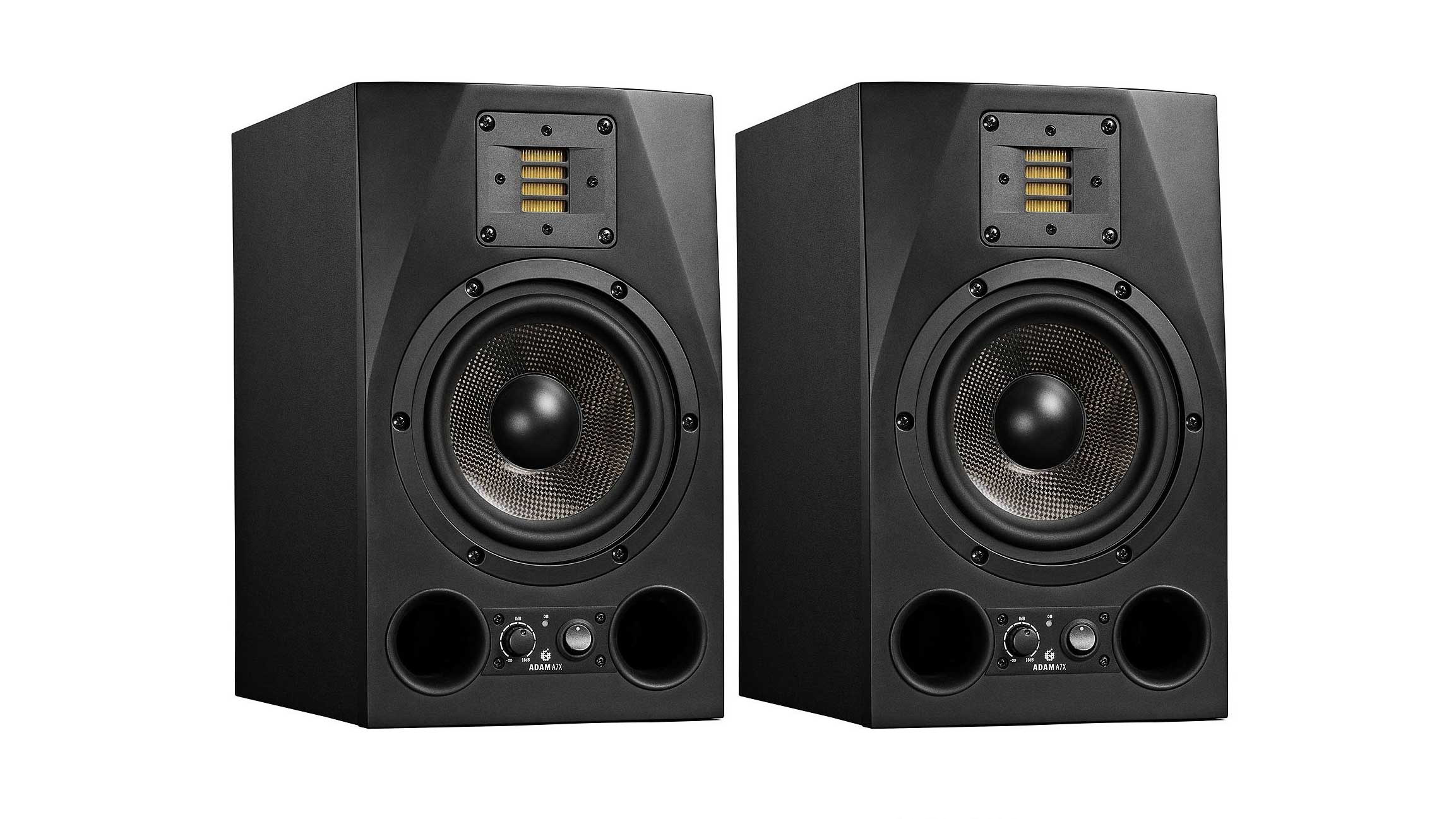
Pros: Famously transparent sound, extended high-frequency range, natural lows, airy highs
Cons: Price tag
ADAM Audio’s renowned A7X monitors have won heaps of critical acclaim from professional engineers and consumers alike since released over a decade ago. These are the German company’s best-selling nearfield monitors for good reason. They are famously transparent, with a mix sound that allows you to hear the finer details (both what’s working and what’s not) in great detail.
That detail is thanks to the monitor’s signature folded-ribbon tweeter and an amp circuit that extends up to 300kHZ. This is well beyond the frequency limits of human hearing, but the result is a speaker that stays clean and airy in the high-frequency range.
Paired with a 7” subwoofer, the A7Xs have a solid bass response, making these speakers great for multiple musical applications. If you want an even-deeper low end, the larger A8X can go down to 38Hz on their own and even lower with a matched subwoofer, while the A77X offers dual 7” woofers in a horizontal studio monitor design.
3. KRK Rokit 7 G4
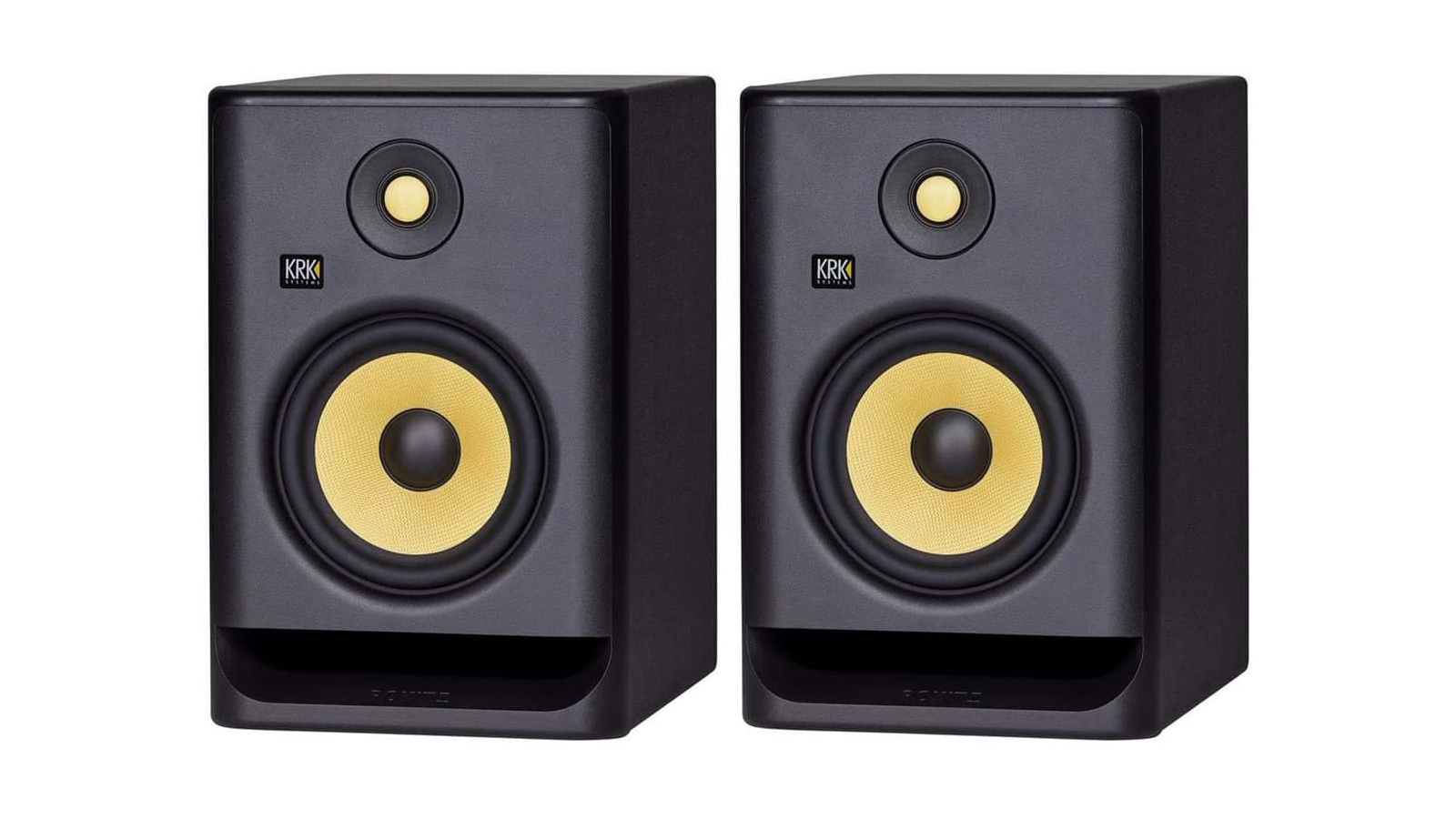
Pros: Built-in DSP and proprietary fine-tuning app, great bang for the buck
Cons: Have to compensate for some low-mid bloat, can’t change EQ settings from the app
KRK’s Rokit series, with their famous yellow woofers, has been an in-home studio mainstay for some time now. The older models had a reputation for booming bass, but that’s all gone. The Rokit 7 G4s have a newly-tuned flat frequency response that’s owed in part to the new Kevlar drivers, which keeps the sound quality constant throughout the listening experience.
On top of that, these monitors have built-in digital menus with LCD panels on the back, letting you tweak EQ and even send signal tones to check your system. At less than $500 a pair, the Rokit 7 G4s are tough to beat in this price range.
4. Focal Alpha 65
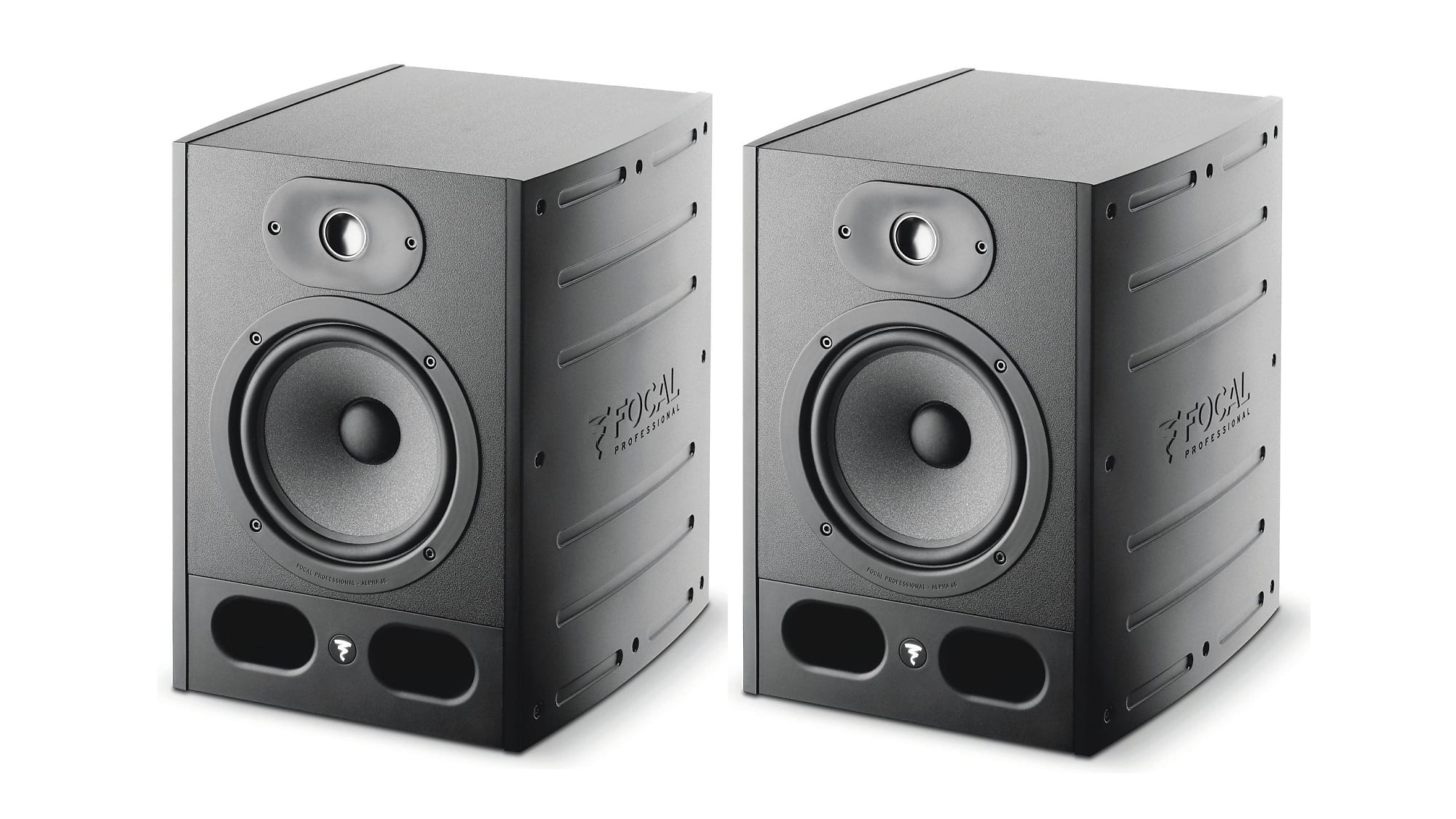
Pros: Fantastic build quality, powerful bass response, eco-friendly automatic shut-off
Cons: No way to disable auto shut-off
Focal’s Alpha 65 speakers are the middle child in the company’s Alpha budget line: more bass than the 5” Alpha 50s, less boomy than the 8” Alpha 80s, perfect for the home studio that needs a little more low-end detail in the monitors.
Front-facing reflex ports make for solid, consistent bass, while there are two shelving EQ knobs on the back to fit whatever kind of room you’re in. Mid- and high-frequency material feels present and highly detailed on these monitors.
The best extra feature of the Focals is that they shut off automatically after 30 minutes when they don’t detect a signal. Then, they’ll start back up as soon as you play something through them. There’s no way of disabling this feature, but it’s more useful than annoying 99 percent of the time.
The recent announcement of Focal’s new Alpha 65 Evo series means it’s a great moment to snap up the original Alpha 65s for the low.
5. Presonus Eris E5
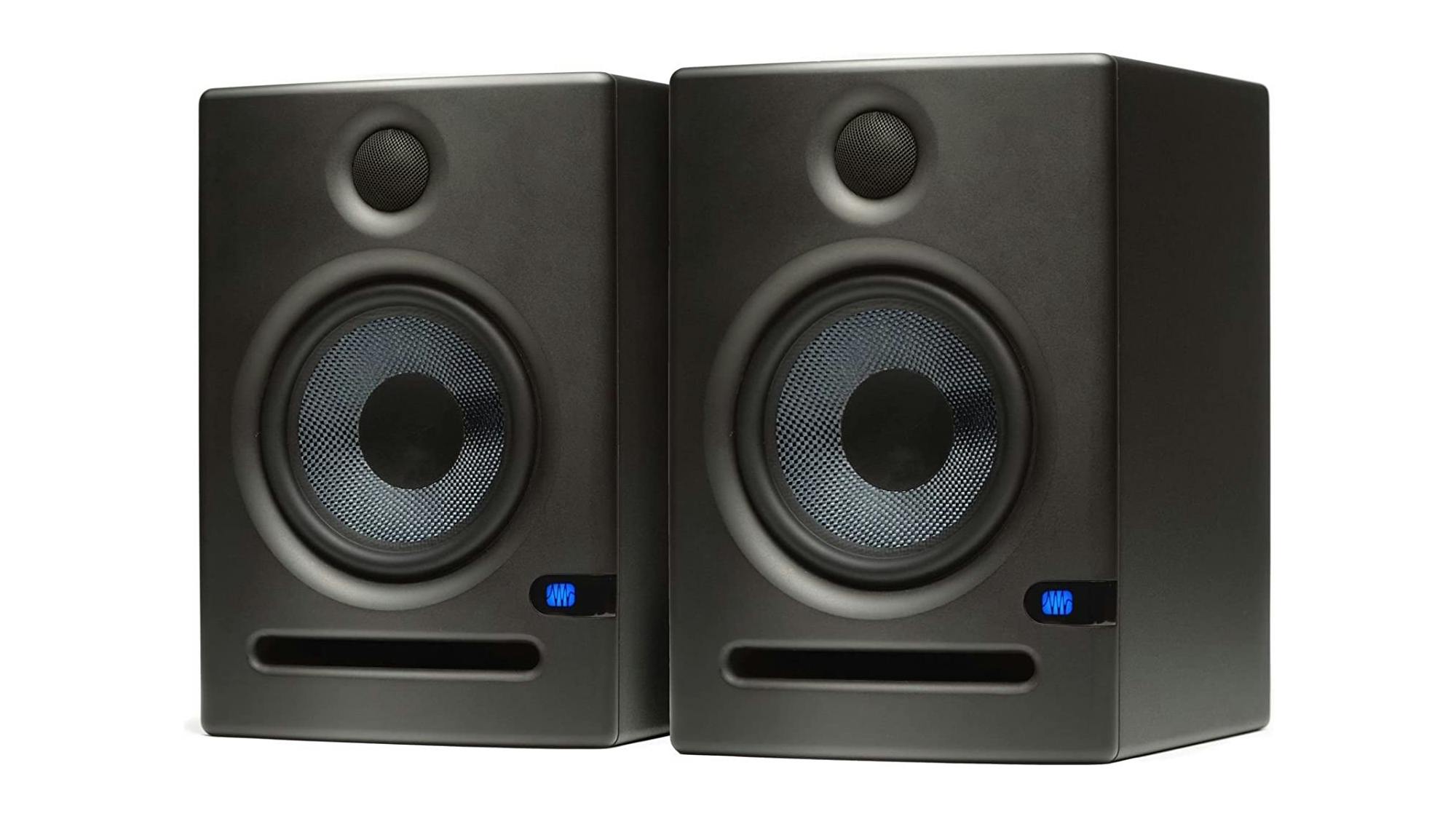
Pros: Huge bang for the buck, flat frequency response in the highs, tight bass
Cons: Need other ways to monitor sub
If you’re looking for your first pair of reference monitors or a pair of speakers that will work well in a smaller, enclosed space, the Presonus Eris E5 presents a very affordable, trustworthy option. They have multiple input options to match whatever outputs are in your audio interface, as well as low-frequency shelf switches to avoid undue bass build-up in your room. So it’s easy to find the listening sweet spot wherever you are.
Don’t shy away from these just because of the “weaker” bass response; the low-end stays focused regardless, and you can always find a larger woofer in the E8.
6. Yamaha HS5
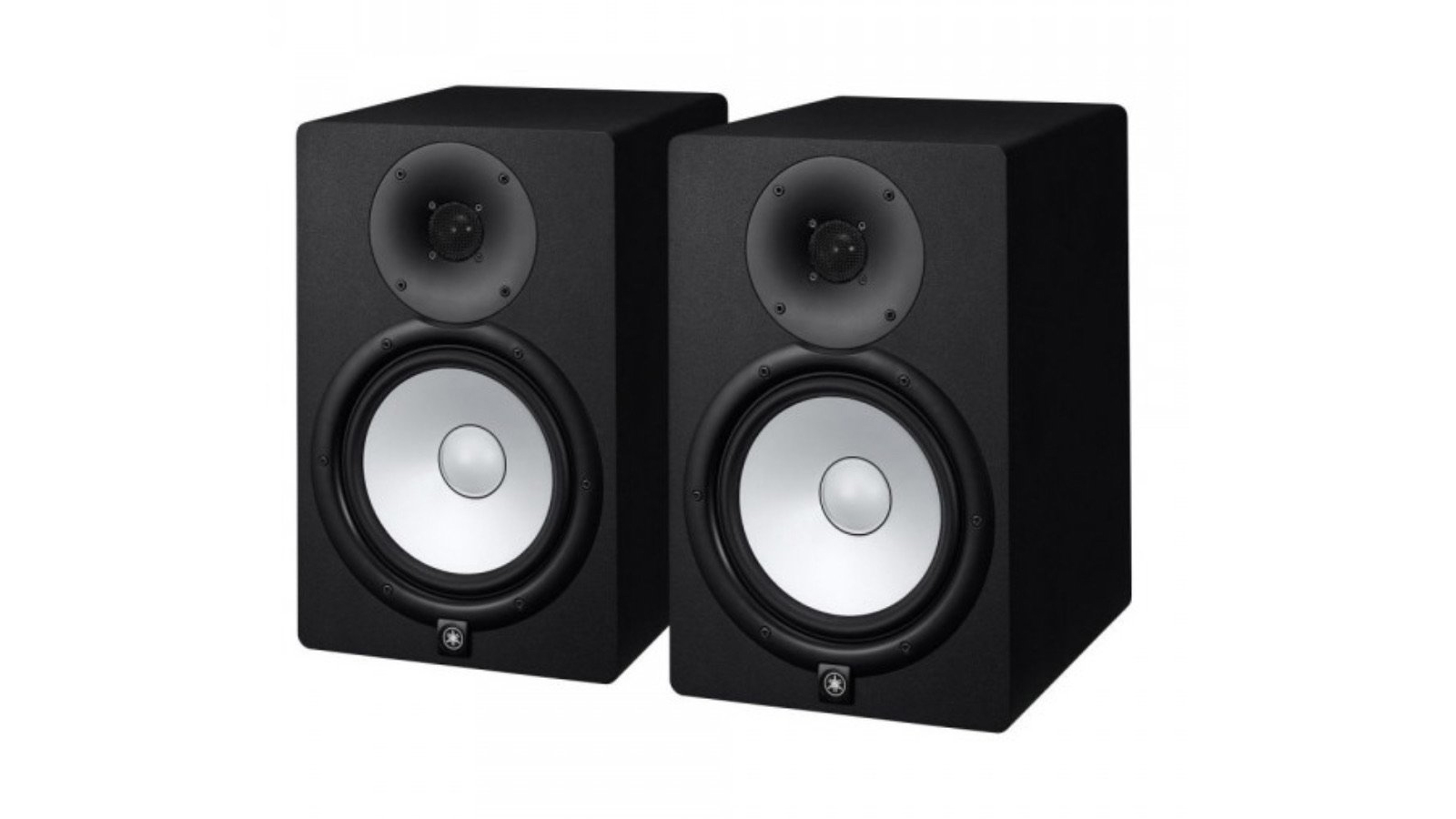
Pros: Transparent sound quality, beautiful, classic design
Cons: Need the bigger models to get punchy bass
Yamaha’s HS monitor series are built to produce great, “balanced” sound even in untreated rooms. Taking design cues from the iconic NS-10 speakers, the HS5 puts an emphasis on the mid-range, illuminating parts of your mix that you might not have taken issue with when listening via other sources.
The bass response isn’t the best with the HS5s, so you’ll probably want to opt for a larger model like the HS8s or pair them with a subwoofer if these are your main speakers.
7. Genelec 8030C
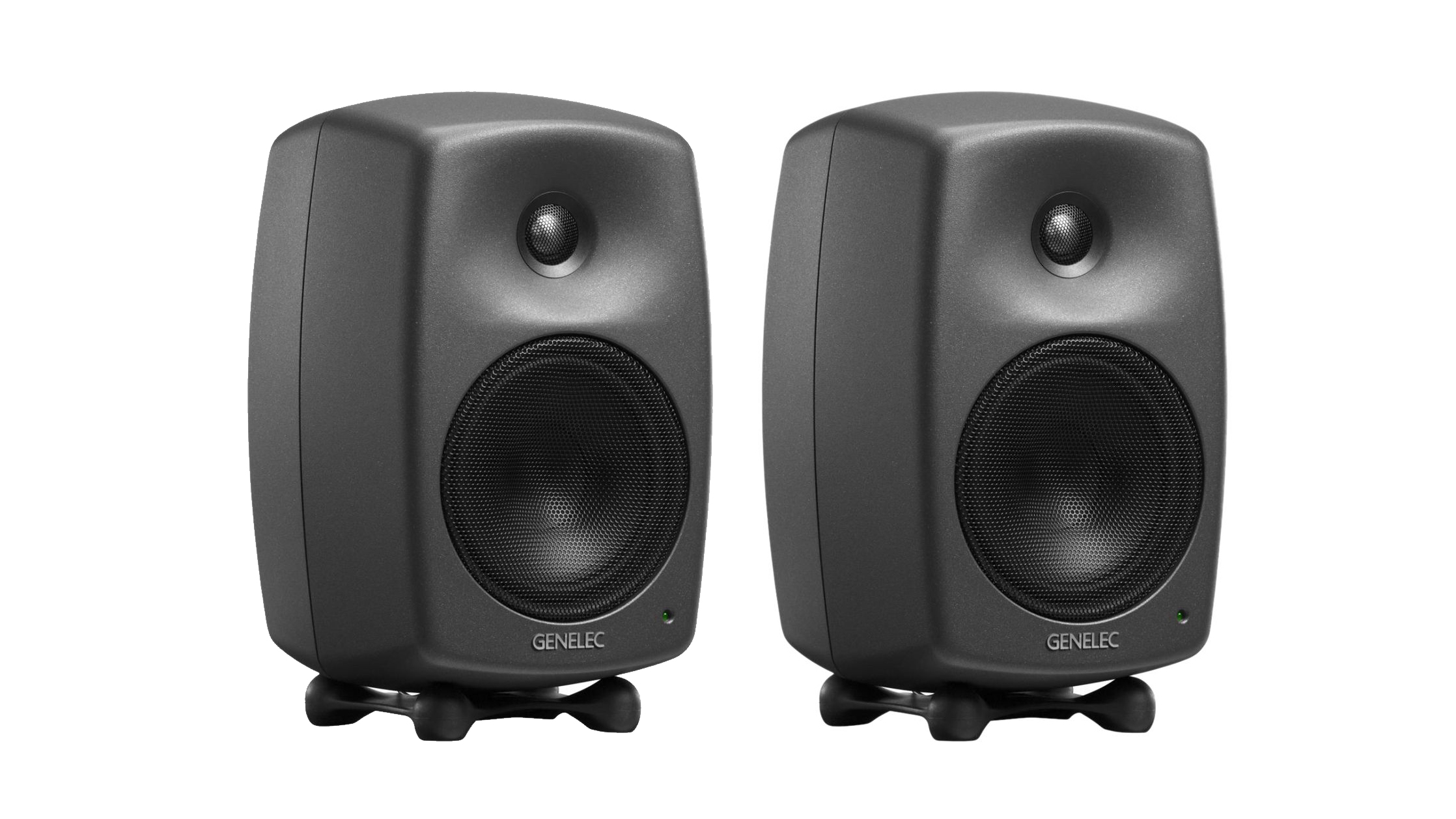
Pros: Super crisp, detailed sound quality, huge degree of frequency control, automatic shut-off
Cons: Price tag, bass cuts off at 47Hz
Genelecs are a mainstay in professional mixing rooms. With the 8030C model, you can bring the Finnish company’s award-winning 5” monitors into your bedroom studio at a (mostly) reasonable price.
You get what you pay for: Intricate roll-off controls, eco-friendly automatic shut-off, and a unique, purposeful design that comes as the result of years of R&D, all in the service of clean, transparent sound reproduction. Once you get used to these, you’ll probably never want to work on other monitors ever again.
8. IK Multimedia iLoud Micro Monitors

Pros: Small enough to fit in a backpack, louder than they look, lots of I/O
Cons: Not ideal as your only set of monitors
The iLoud Micro Monitors are a secret weapon for on-the-go recording and mix engineers alike. These 3” speakers might look like typical computer speakers, with their small size, paper cone woofers, and silk dome tweeters, but don’t be fooled: They punch above their weight when it comes to bass response, and 50W of total power means that volume will never be an issue.
The built-in isolation base on each speaker means you can put them on your desk and angle them upwards for great stereo imaging, and they even have Bluetooth and a 1/8-inch aux input, so you can reference against other music with ease in a pinch. Make your tweaks with confidence and clarity, wherever you are.
It’s also worth mentioning that IK Multimedia also makes a self-calibrating studio monitor called the iLoud MTM. It’s also teeny and compact but comes with a reference microphone that will automatically adjust the monitors’ frequency response depending on where everything is placed in a room.
For more studio add-ons, check our recommendations for the best budget USB audio interfaces.
